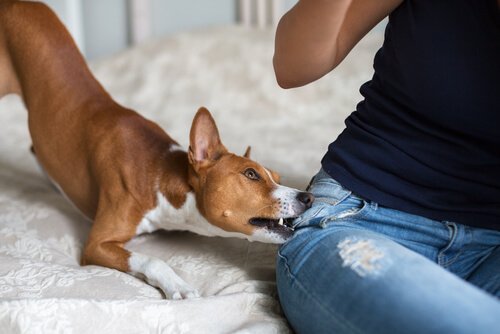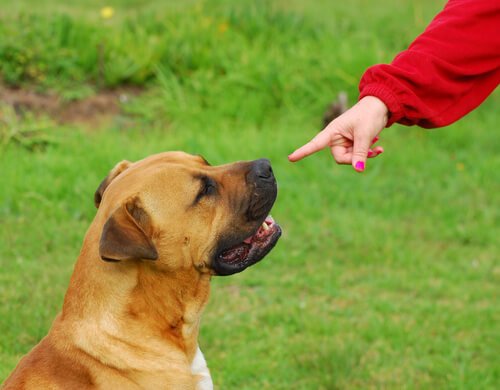Basic Puppy Training


Written and verified by the lawyer Francisco María García
Beginning basic puppy training
It is ideal for only one family member to train the puppy if it’s younger than three months old. After that age, he can receive commands from several people.

First, find a place for him to sleep. A puppy knowing his territory is an important part of basic puppy training. The place should be comfortable, and the puppy must learn that this is where he should sleep.
It’s very important to give him a name and teach him to recognize it. A short name is best, so he can remember it easily. At first, say his name slowly, and encourage him to come every time you call.
Housebreaking
Teaching dogs to defecate and urinate according to the household rules is one of the biggest challenges many owners have. However, it’s not difficult to house train them if you do it from an early age.
One of the best methods is taking the puppy to a designated bathroom area every couple hours. After he goes to the bathroom successfully, congratulate him by giving him a reward such as treat or toy. It’s important for him to understand that he did a good job and is being rewarded for it.
Puppies usually defecate within one hour after every meal, so that will be the ideal time to take them outside. Say “No” when they urinate or defecate in the wrong place.
You should put the water dish away an hour before the puppy lies down. If an owner is consistent on making an effort to enforce these simple changes, this basic part of puppy training can be completed in 6 or 7 days.
Other training methods
You need to take many things into account for basic puppy training. In addition to the aforementioned, here are some of the most important things to consider:
- Give him food at the same time every day, and always after you’ve eaten. That way he’ll understand “who’s the boss”.
- Don’t leave him alone for long periods of time. It has to be done progressively: leave him for short periods of time, and gradually increase the time.
- You should walk him inside the house on a leash. The puppy has to walk by your side and stop when you do. Reward him when he does so.
- Socialization is crucial.
- Never hit or threaten him with the leash. The leash should represent fun. It’s a sort of “umbilical cord” with the owner.
- If the puppy pulls on the leash, simply say “no” and change direction so he understands who’s is in command.
- Never give your puppy medicine, punish him, or attend his wounds in his sleeping area.

Beginning basic puppy training
It is ideal for only one family member to train the puppy if it’s younger than three months old. After that age, he can receive commands from several people.

First, find a place for him to sleep. A puppy knowing his territory is an important part of basic puppy training. The place should be comfortable, and the puppy must learn that this is where he should sleep.
It’s very important to give him a name and teach him to recognize it. A short name is best, so he can remember it easily. At first, say his name slowly, and encourage him to come every time you call.
Housebreaking
Teaching dogs to defecate and urinate according to the household rules is one of the biggest challenges many owners have. However, it’s not difficult to house train them if you do it from an early age.
One of the best methods is taking the puppy to a designated bathroom area every couple hours. After he goes to the bathroom successfully, congratulate him by giving him a reward such as treat or toy. It’s important for him to understand that he did a good job and is being rewarded for it.
Puppies usually defecate within one hour after every meal, so that will be the ideal time to take them outside. Say “No” when they urinate or defecate in the wrong place.
You should put the water dish away an hour before the puppy lies down. If an owner is consistent on making an effort to enforce these simple changes, this basic part of puppy training can be completed in 6 or 7 days.
Other training methods
You need to take many things into account for basic puppy training. In addition to the aforementioned, here are some of the most important things to consider:
- Give him food at the same time every day, and always after you’ve eaten. That way he’ll understand “who’s the boss”.
- Don’t leave him alone for long periods of time. It has to be done progressively: leave him for short periods of time, and gradually increase the time.
- You should walk him inside the house on a leash. The puppy has to walk by your side and stop when you do. Reward him when he does so.
- Socialization is crucial.
- Never hit or threaten him with the leash. The leash should represent fun. It’s a sort of “umbilical cord” with the owner.
- If the puppy pulls on the leash, simply say “no” and change direction so he understands who’s is in command.
- Never give your puppy medicine, punish him, or attend his wounds in his sleeping area.

This text is provided for informational purposes only and does not replace consultation with a professional. If in doubt, consult your specialist.








